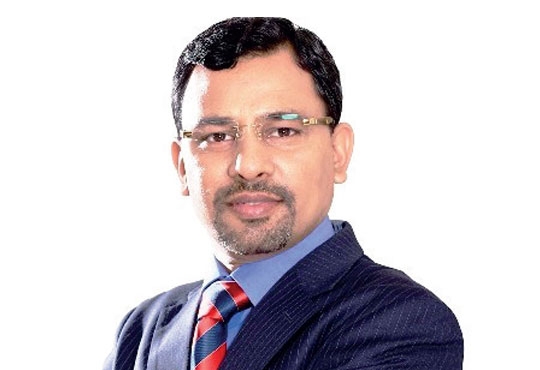
Unlocking the Power of IIoT for Supply Chain Optimization
Darshan.K, CIOTech Outlook Team | Sunday, 05 November 2023, 06:25 IST
 The global market for industrial Internet of Things (IIoT) was sized at over 544 billion U.S. dollars in 2022. The market is expected to grow in size in the coming years, reaching some 3.3 trillion U.S. dollars by 2030. The IIoT is enabled by technologies such as cybersecurity, cloud computing, edge computing, mobile technologies, machine-to-machine, 3D printing, advanced robotics, big data, internet of things, RFID technology, and cognitive computing.
The global market for industrial Internet of Things (IIoT) was sized at over 544 billion U.S. dollars in 2022. The market is expected to grow in size in the coming years, reaching some 3.3 trillion U.S. dollars by 2030. The IIoT is enabled by technologies such as cybersecurity, cloud computing, edge computing, mobile technologies, machine-to-machine, 3D printing, advanced robotics, big data, internet of things, RFID technology, and cognitive computing.
According to the Internet of Things Agenda, “IIoT incorporates machine learning and big data technology, harnessing the sensor data, machine-to-machine communication and automation technologies that have existed in industrial settings for years. The driving philosophy behind the IIoT is that smart machines are better than humans at accurately, consistently capturing and communicating data.”
IIoT is becoming popular and industry experts are continuing to discuss its importance, and opportunities are growing. Manufacturers are utilizing IIoT to identify the ways that their processes are inefficient and turn them into more beneficial practices. Here are a few practices that are optimizing their supply chain operations.
Real-time Visibility:
One of the primary advantages of IIoT is the ability to monitor the entire supply chain in real-time. With sensors and devices placed strategically throughout the supply chain, businesses can track the movement of goods, inventory levels, and even the condition of products in transit. This real-time visibility enables organizations to identify bottlenecks and inefficiencies instantly, allowing for prompt corrective actions.
“Without data, you’re just another person with an opinion.”, W. Edwards Deming, Economist
Predictive Analytics:
IIoT generates vast amounts of data that can be harnessed for predictive analytics. By analyzing historical data and current information, businesses can predict potential supply chain disruptions, demand fluctuations, and other critical factors. This foresight empowers companies to proactively address issues before they escalate, reducing downtime and operational costs.
“Without big data analytics, companies are blind and deaf, wandering out onto the web like deer on a freeway.” Geoffrey Moore, American Management Consultant
“Consumer data will be the biggest differentiator in the next two to three years. Whoever unlocks the reams of data and uses it strategically will win.” Angela Ahrendts, Senior VP, Apple Retail
Asset Optimization:
IIoT can be used to monitor and optimize the performance of machinery and equipment within the supply chain. By collecting data on the condition and performance of assets, organizations can schedule maintenance activities precisely when needed, preventing costly breakdowns and minimizing downtime.
“If the first 10 years for us was about fixing the consumer experience, the next 10 years is about an equal amount of focus on making sure that the music industry sees the same transformation that the consumer side has seen.”, Daniel Ek, CEO, Spotify
Enhanced Collaboration:
IIoT facilitates seamless communication and collaboration between various stakeholders in the supply chain, including suppliers, manufacturers, logistics providers, and customers. This improved collaboration results in better coordination, reduced lead times, and increased efficiency.
“All we are doing is looking at the timeline, from the moment the customer gives us an order to the point when we collect the cash. And we are reducing the timeline by reducing the non-value adding wastes.”, Taiichi Ohno, father of the Toyota Production System (TPS)
Cost Reduction:
IIoT helps businesses identify cost-saving opportunities by optimizing routes, reducing fuel consumption, and streamlining inventory management. By eliminating waste and improving resource allocation, organizations can significantly reduce operating costs.
To maximize the benefits of IIoT, organizations should focus on practical applications such as smart inventory management, route optimization, quality control, cold chain management, and predictive maintenance. However, they must also address challenges related to data security, data overload, integration, scalability, and regulatory compliance.
In an era where agility and efficiency are paramount, IIoT has emerged as a game-changing technology for experts in supply chain optimization. By embracing IIoT and staying abreast of the latest developments in this field, organizations can stay ahead of the competition and unlock the full potential of their supply chains.
CIO Viewpoint
Artificial Intelligence & The Disruptive Chatbot
By Vishal Sinha, President & CIO, Tranzlease Holdings
IoT: Technology Trends to Watch Out for in 2021
By Sudeep Agrawal, AVP and Head IT, ReNew Power
Reskilling IT with IOT, Cloud & AI
By Uttam Kumar, Head - IT Innovations & New Technology, Aircel
CXO Insights
4 Must Have IT Security Skill sets To Counter...
By Sunil Sharma, Managing Director - Sales, India & SAARC, Sophos
How Low-Code Is Transforming The Future Of Work...
By Deepak Pargaonkar, VP - Solution Engineering, Salesforce
The Path To Managing Data As An Asset








.jpg)
.jpg)
.jpg)
.jpg)

.jpg)
.jpg)




